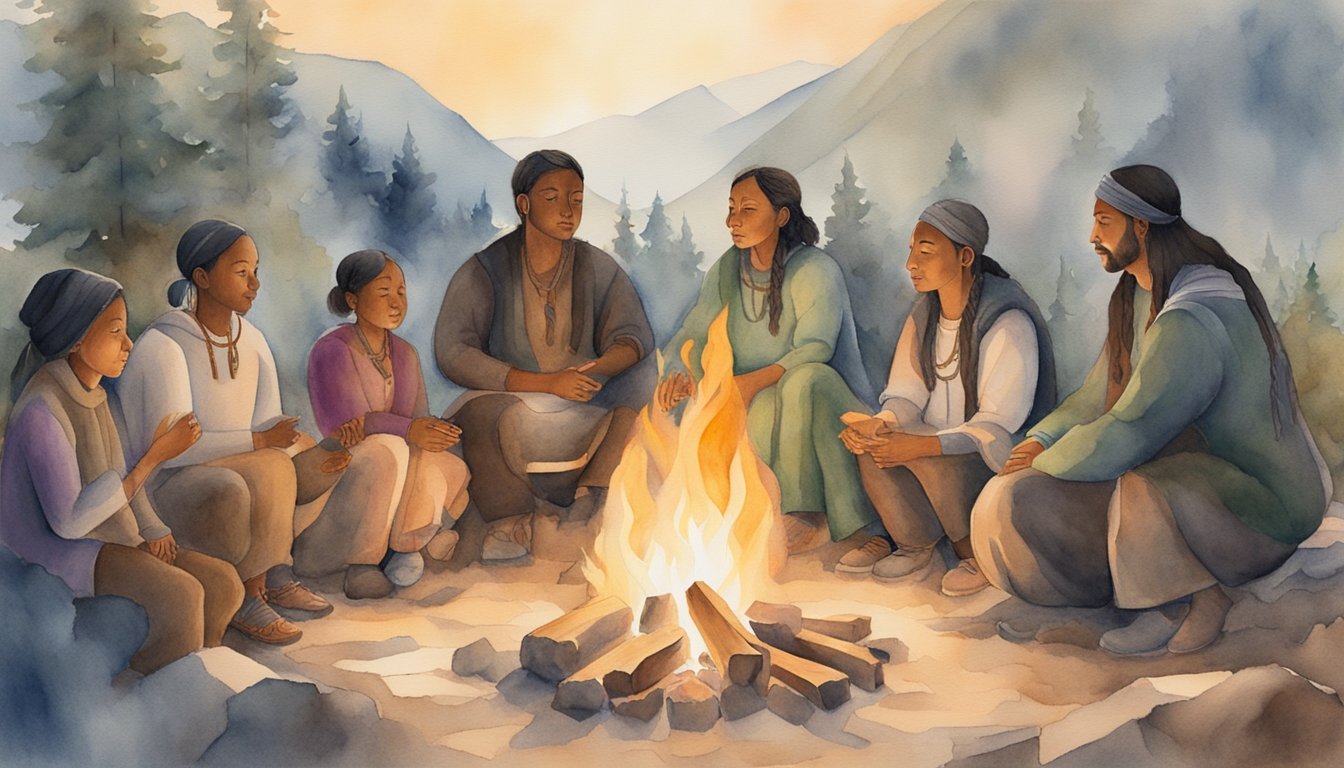Understanding Two-Spirit Identity
Two-Spirit is an identity deeply rooted in Native American and Indigenous cultures, encompassing a blend of gender diversity and spirituality that has been influenced by the histories and traditions of countless tribes.
Historical Context and Colonization
Two-Spirit is a term that originates from the Native American concept of embodying both masculine and feminine spirits. The roles and recognition of Two-Spirit individuals vary widely among different tribes and First Nations. European colonization severely impacted these traditions, with many colonizers disregarding the cultural significance and often oppressing gender diversity within these communities.
Gender Diversity in Indigenous Cultures
Indigenous cultures traditionally recognized gender roles beyond the male-female binary, appreciating a spectrum of gender diversity. Two-Spirit people have often held significant positions within their tribes, such as healers, spiritual leaders, and caretakers of tradition. Their identity is tied not just to their gender expression or sexuality but is also spiritual.
The Role of Two-Spirit People
In many tribes, Two-Spirit individuals were revered and turned to for their unique perspectives and abilities. Responsible for a variety of social and service roles within their communities, from mediators to family members, Two-Spirit people have contributed significantly to the rich tapestry of Native American heritage. Within contemporary LGBTQ and Indigenous spheres, they are also playing an important part in youth mentorship, helping younger generations to embrace their culture and identity.
Contemporary Two-Spirit Community and Culture

The contemporary Two-Spirit community is a vibrant part of Indigenous cultures, intertwining aspects of identity, queer and gender expression, and activism. It represents a reclaiming of Native American tradition and a push against the gender binary, while also facing unique societal challenges. Rooted in ancestral teachings, the Two-Spirit identity fosters resilience and connection among Indigenous peoples, emphasizing the sacred roles that gender-diverse individuals have held throughout history. This resurgence aligns with broader global movements acknowledging marginalized identities, much like the recognition of Timbuktu history and culture as central to understanding African intellectual and spiritual traditions. By bridging past and present, the Two-Spirit community continues to challenge colonial perspectives while celebrating the richness of Indigenous worldviews.
Challenges and Resilience
Two-Spirit individuals often navigate complex social terrains. They face issues such as homophobia and the overshadowing of Indigenous voices within the queer movement. Despite these obstacles, many Two-Spirit people stand as resilient warriors for their culture, tirelessly working to reinforce their rightful place on their ancestral land and within their communities. They strive for social acceptance in both Native American and broader cultures, emphasizing the need for diversity in gender expressions.
Two-Spirit Involvement in Art and Activism
Art and activism are significant avenues where Two-Spirit people express their cultural heritage and fight for recognition. Within Indigenous and art communities, Two-Spirit individuals have become prominent community leaders, using their work to highlight the intersection of their Indigenous and queer identities, and advocating for social change. From traditional ceremonies to contemporary art, they offer perspectives that challenge the gender binary and bring light to the marginalized experiences of Indigenous queer people.
Education, Representation, and Acceptance
Education about Two-Spirit identities is crucial to fostering representation and acceptance. Canada, particularly regions such as Manitoba, has seen efforts to increase visibility for Two-Spirit individuals through education. Language preservation is a part of this, as native languages often encompass gender-variant terms absent in English. Representation has garnered more attention, with a focus on preventing appropriation by non-Native individuals and ensuring that the Two-Spirit community’s unique cultural identity is understood and respected.

